
How to Use Waveshare Solar Power Manager Module 6V-24V Solar Panel 5V/3A Output: Examples, Pinouts, and Specs
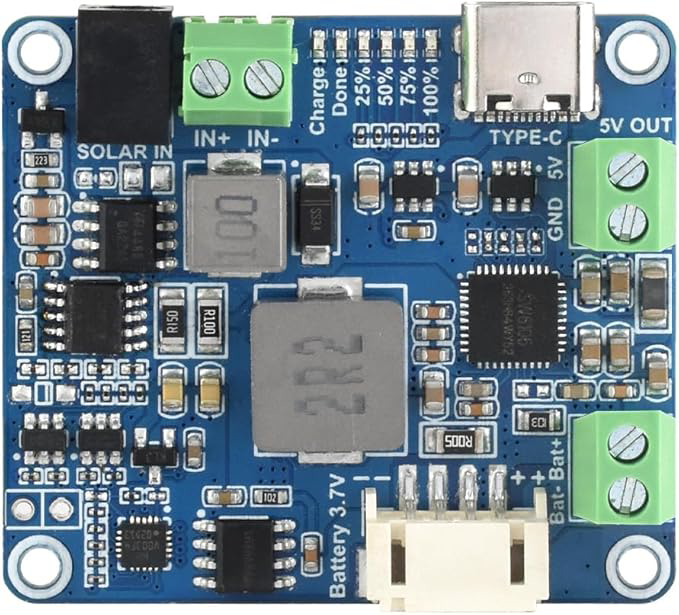
 Design with Waveshare Solar Power Manager Module 6V-24V Solar Panel 5V/3A Output in Cirkit Designer
Design with Waveshare Solar Power Manager Module 6V-24V Solar Panel 5V/3A Output in Cirkit DesignerIntroduction
The Waveshare Solar Power Manager Module (D) is a compact and efficient power management solution designed for solar energy harvesting. It is capable of converting solar panel input (6V-24V) into a stable 5V output with a maximum current of 3A. This module is ideal for powering low-power devices, IoT systems, and microcontroller-based projects, especially in off-grid or renewable energy setups.
Explore Projects Built with Waveshare Solar Power Manager Module 6V-24V Solar Panel 5V/3A Output
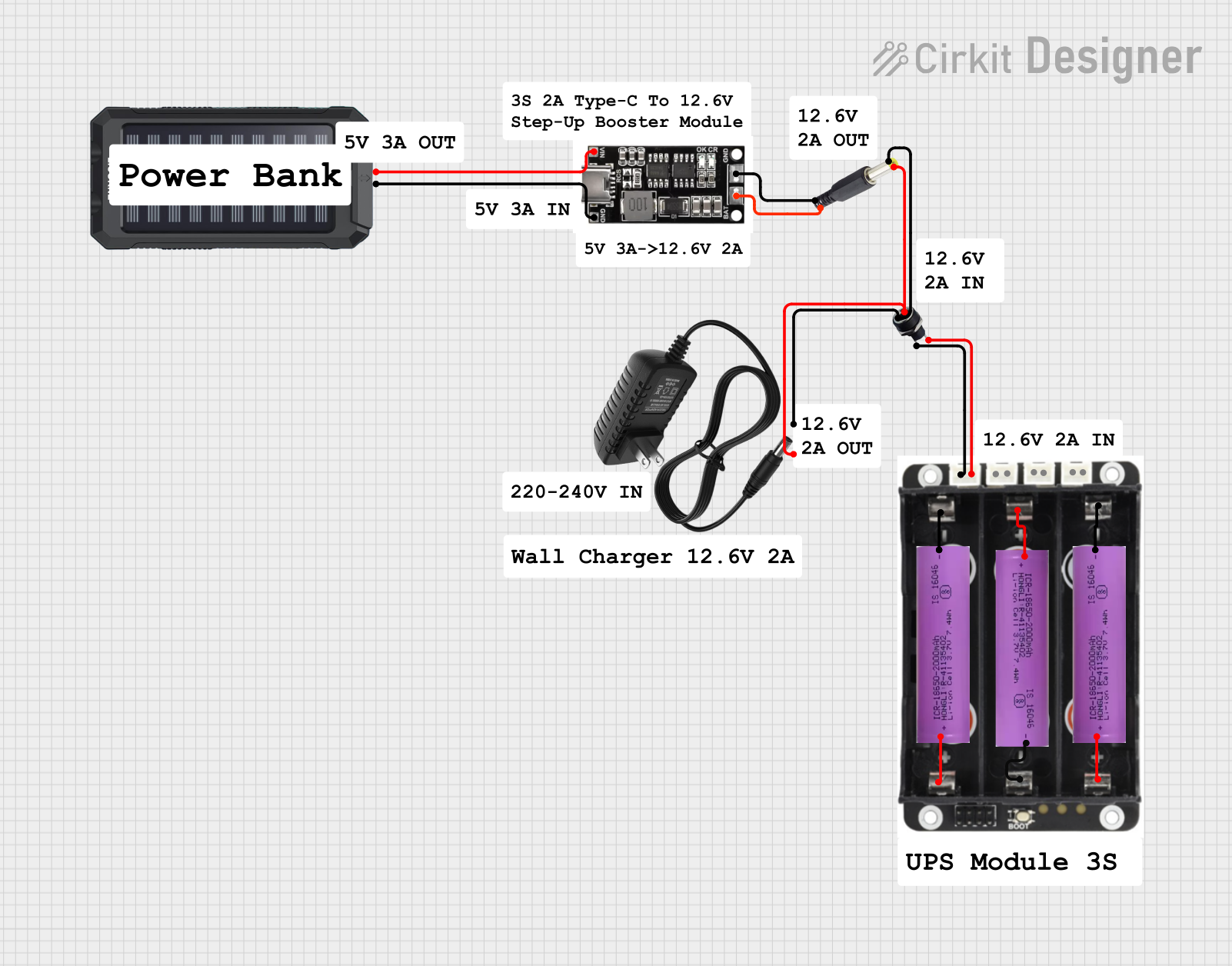
 Open Project in Cirkit Designer
Open Project in Cirkit Designer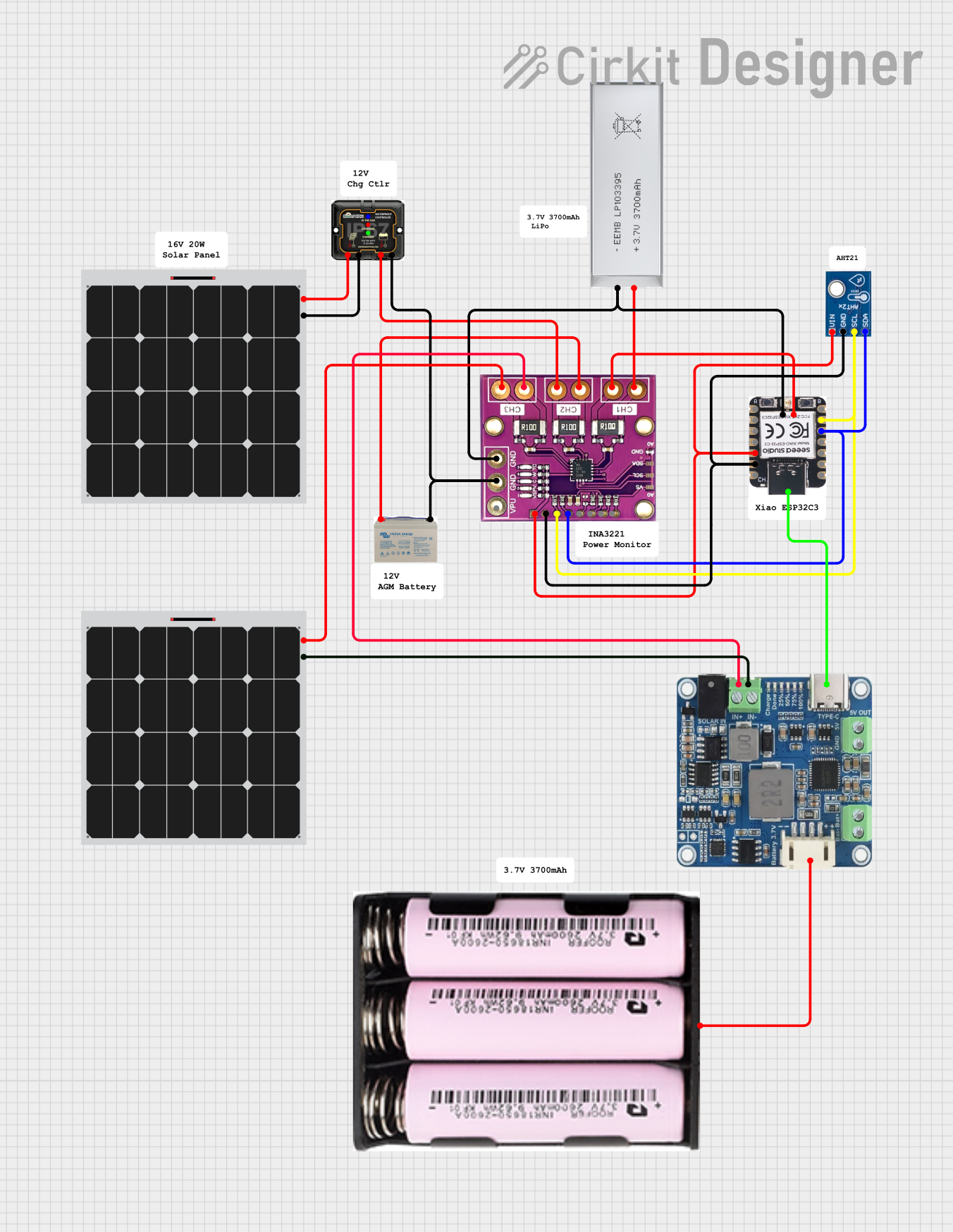
 Open Project in Cirkit Designer
Open Project in Cirkit Designer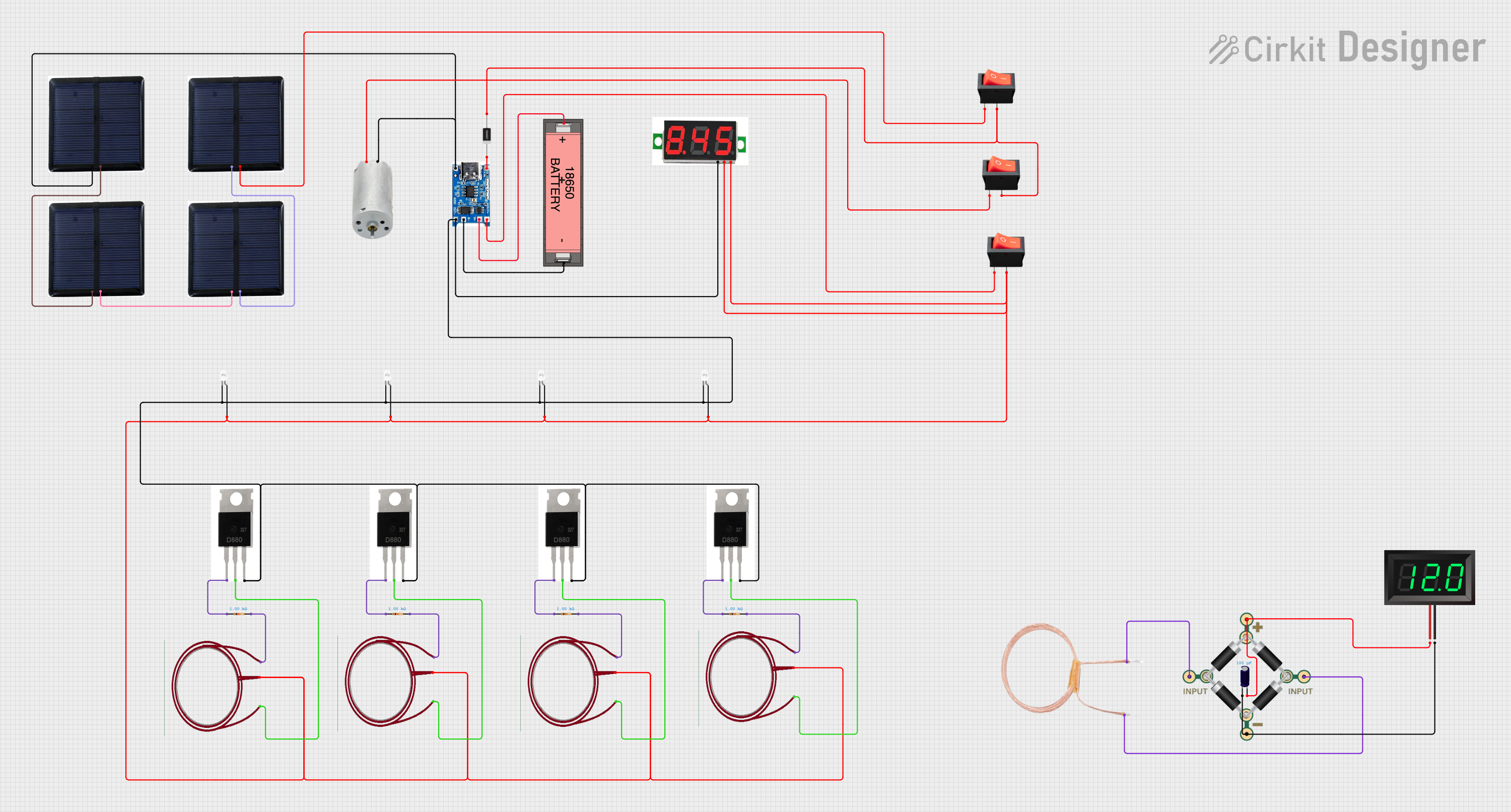
 Open Project in Cirkit Designer
Open Project in Cirkit Designer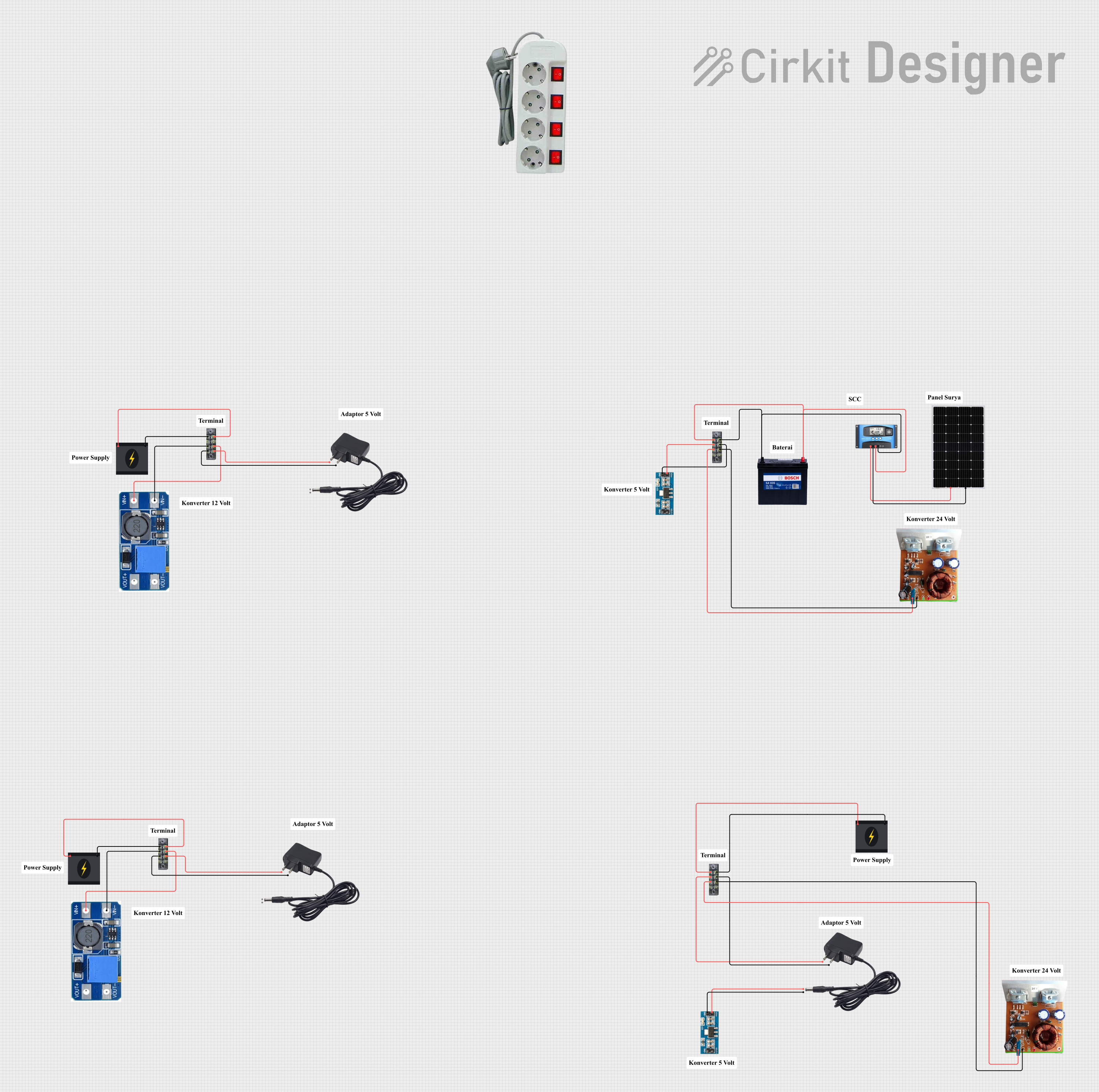
 Open Project in Cirkit Designer
Open Project in Cirkit DesignerExplore Projects Built with Waveshare Solar Power Manager Module 6V-24V Solar Panel 5V/3A Output

 Open Project in Cirkit Designer
Open Project in Cirkit Designer
 Open Project in Cirkit Designer
Open Project in Cirkit Designer
 Open Project in Cirkit Designer
Open Project in Cirkit Designer
 Open Project in Cirkit Designer
Open Project in Cirkit DesignerCommon Applications and Use Cases
- Solar-powered IoT devices and sensors
- Off-grid microcontroller projects (e.g., Arduino, Raspberry Pi)
- Portable solar charging systems
- Renewable energy experiments and prototypes
- Backup power systems for small electronics
Technical Specifications
The following table outlines the key technical details of the Waveshare Solar Power Manager Module:
| Parameter | Value |
|---|---|
| Input Voltage Range | 6V to 24V (Solar Panel Input) |
| Output Voltage | 5V |
| Maximum Output Current | 3A |
| Efficiency | Up to 96% |
| Operating Temperature | -40°C to 85°C |
| Dimensions | 65mm x 56mm |
| Weight | 20g |
Pin Configuration and Descriptions
The module features several input/output pins and connectors for easy integration. Below is the pin configuration:
| Pin/Connector | Description |
|---|---|
| VIN | Input for solar panel (6V-24V). Connect the positive terminal of the solar panel. |
| GND | Ground connection. Connect the negative terminal of the solar panel or load. |
| USB OUT | USB Type-A port for 5V/3A output. Ideal for powering USB devices. |
| 5V OUT | 5V output pin for direct connection to external circuits. |
| CHG LED | Charging indicator LED. Lights up when the battery is charging. |
| FULL LED | Fully charged indicator LED. Lights up when the battery is fully charged. |
| BAT IN | Battery input terminal for connecting a rechargeable battery (e.g., Li-ion). |
Usage Instructions
How to Use the Component in a Circuit
- Connect the Solar Panel: Attach the positive terminal of the solar panel to the
VINpin and the negative terminal to theGNDpin. Ensure the solar panel's voltage is within the 6V-24V range. - Connect the Load: Use the
USB OUTport or the5V OUTpin to power your device. Ensure the load does not exceed the 3A current limit. - Optional Battery Connection: If you want to store energy, connect a rechargeable battery to the
BAT INterminal. The module will manage charging and discharging automatically. - Monitor LEDs: Use the
CHG LEDandFULL LEDindicators to monitor the charging status.
Important Considerations and Best Practices
- Input Voltage: Ensure the solar panel's output voltage is within the specified range (6V-24V). Exceeding this range may damage the module.
- Heat Dissipation: The module may heat up during operation. Ensure proper ventilation or use a heatsink if necessary.
- Battery Compatibility: Use only compatible rechargeable batteries (e.g., Li-ion or LiPo) to avoid damage or safety hazards.
- Load Current: Do not exceed the 3A output current limit to prevent overloading the module.
Example: Using with Arduino UNO
The module can be used to power an Arduino UNO directly via its USB OUT port or 5V OUT pin. Below is an example of connecting the module to an Arduino UNO and reading data from a sensor:
Circuit Connections
- Connect the solar panel to the
VINandGNDpins of the module. - Connect the
USB OUTport of the module to the Arduino UNO's USB input. - Optionally, connect a rechargeable battery to the
BAT INterminal for energy storage.
Arduino Code Example
// Example: Reading data from a temperature sensor powered by the Solar Power Manager
// Ensure the Solar Power Manager is connected to the Arduino UNO via USB OUT.
const int sensorPin = A0; // Analog pin connected to the temperature sensor
float voltage, temperature;
void setup() {
Serial.begin(9600); // Initialize serial communication
pinMode(sensorPin, INPUT); // Set the sensor pin as input
}
void loop() {
int sensorValue = analogRead(sensorPin); // Read the sensor value
voltage = sensorValue * (5.0 / 1023.0); // Convert to voltage
temperature = (voltage - 0.5) * 100.0; // Convert voltage to temperature (Celsius)
// Print the temperature to the Serial Monitor
Serial.print("Temperature: ");
Serial.print(temperature);
Serial.println(" °C");
delay(1000); // Wait for 1 second before the next reading
}
Troubleshooting and FAQs
Common Issues and Solutions
No Output Voltage
- Cause: Solar panel voltage is too low or not connected properly.
- Solution: Ensure the solar panel provides at least 6V and is connected to the correct pins.
Overheating
- Cause: Excessive load or poor ventilation.
- Solution: Reduce the load current or improve ventilation around the module.
Battery Not Charging
- Cause: Incompatible or faulty battery.
- Solution: Use a compatible rechargeable battery and check the connections.
LED Indicators Not Working
- Cause: Faulty module or incorrect wiring.
- Solution: Verify all connections and ensure the module is receiving sufficient input voltage.
FAQs
Can I use this module without a battery?
- Yes, the module can operate without a battery. It will directly power the load from the solar panel.
What type of batteries are supported?
- The module supports rechargeable batteries such as Li-ion or LiPo.
Can I connect multiple solar panels?
- Yes, you can connect multiple solar panels in parallel, provided the combined voltage remains within the 6V-24V range.
Is the module waterproof?
- No, the module is not waterproof. Use it in a dry environment or enclose it in a waterproof case for outdoor use.